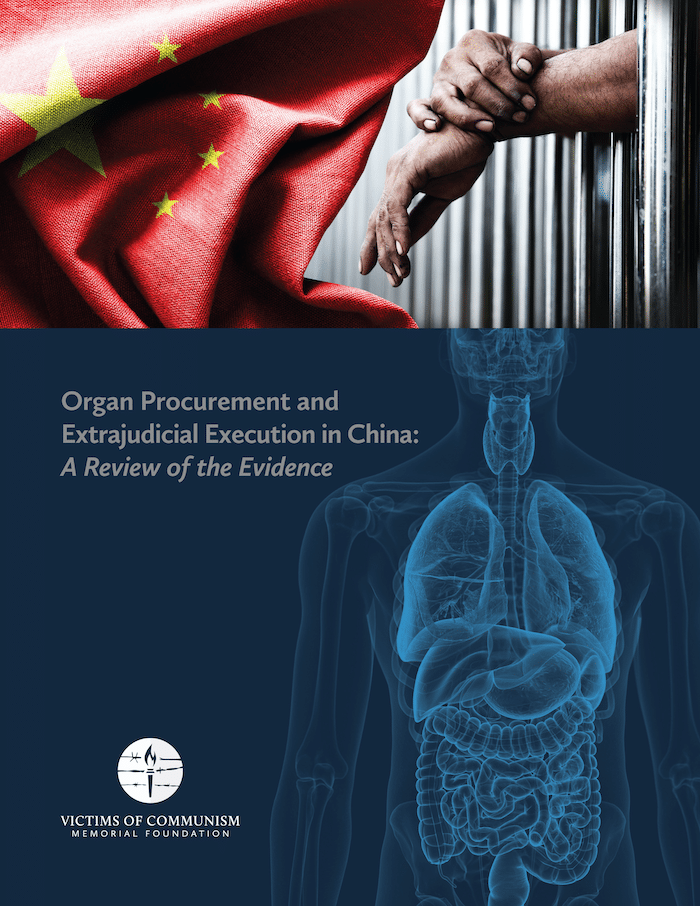The Victims of Communism Memorial Foundation (VOC) has conducted a detailed examination of the allegations of extrajudicial killing for the harvesting of organs by the Chinese Communist Party and the evidence underlying these allegations. The report was produced by VOC China Studies Research Fellow Matthew P. Robertson, a doctoral researcher whose work using statistical forensics to demonstrate the falsification of Chinese organ donor registry data was recently published in the leading journal of medical ethics, BMC Medical Ethics.
The report contributes to the literature and policy discussion on coercive organ transplant practices in China in several ways: it presents new primary documentary research and original datasets, integrates established scholarship on China’s death penalty system, and situates previously published works on organ harvesting within a careful discussion of counterfactual scenarios and scientific inference. It also serves as a roadmap to the debate about and evidence of extrajudicial killing for organs in China, while also critically engaging with how that evidence has been interpreted and received. The report challenges international complacency on the topic by examining the signs of ongoing organ trafficking, highlighting the falsification of official datasets, and analyzing the evidence that Uyghur Muslims may be the latest victims of this form of state predation.
In examining the extraordinary growth of organ transplantation and rapid availability of organs in China, the report asks one overarching question: What is the most plausible explanation for the source of the organs? The report examines the evidence of blood-testing and medical examinations of Falun Gong practitioners and Uyghurs in custody, and finds that extrajudicial organ sourcing from these populations is the most plausible and parsimonious explanation. As such, readers should adopt it as empirically adequate until either a better explanation or reliable data inconsistent with the hypothesis emerges.
Data sources
VOC researchers created a new dataset on the growth of China’s transplant system, based on nearly 800 data points from over 300 hospitals, showing the rapid growth of China’s organ transplantation system just after 2000. As part of the report, Robertson examined several hundred original, primary sources on organ transplantation practices in China. These included archival documents, internal speeches and Communist Party circulars, clinical papers, internal circulation books, transplantation handbooks and textbooks, and hundreds of live and archived versions of transplant hospital websites. This report’s appendices (available online) also contain the first attempt to create a comprehensive picture of the official claims of organ transplant volume, revealing a number of discrepancies and apparent attempts at retroactively manipulating transplant volume downward.
Background
China’s organ transplantation system began a period of rapid expansion starting in the year 2000. Over the four-year period from 2000 to 2004, according to Dr. Huang Jiefu (a key architect of China’s transplantation system), China more than tripled the number of hospitals performing transplants. This resulted in transplant volume growth in kidney transplants of 510%, in liver transplants of 1,820%, in heart transplants of 1,100%, and in lung transplants of 2,450%.
In original research, Robertson tabulated the transplant infrastructure of a convenience sample of 10 transplant hospitals of varying sizes, locations, and bureaucratic affiliation, using highly conservative variable inputs. This led to an estimate of nearly 14,000 transplants annually in just 10 hospitals. There are 173 authorized transplant facilities in China.
In a Data Supplement to the report expanding on the question of transplant volume, VOC proposes a defensible bare minimum estimate over most of the period under study of 30,000 transplants annually. This figure arises independently from three different methods of calculation. The figure is not intended to estimate actual transplant volume, but as a device to emphasize that even a highly conservative and artificial attempt to establish a bare minimum value results in one that is triple the size of China’s official public stance, and which cannot be explained by the official narrative.
The CCP’s official narrative of its organ sourcing practices has been subject to several revisions. Until 2005, the official position was that organs came only from volunteers, and that claims of China harvesting organs from prisoners were “vicious slander.” Subsequently, the official position was revised to claim that organs were coming from judicially executed prisoners — i.e., those who had been convicted of capital crimes and sentenced to death. This remained the official explanation proffered for China’s organ transplant sourcing until 2015, and it remains the received wisdom among many in the West to this day, despite death penalty reforms that began steadily reducing executions in 2000, and which led to a further and rapid reduction in 2007. From 2015 onward, PRC officials have claimed that hospital-based citizen donors have replaced capital prisoners as the sole source of deceased donor organs for transplant.
Results
The central argument of this report can be summarized as follows:
-
Starting in 2000, the PRC rapidly constructed a worldclass organ transplantation system that began performing tens of thousands of transplants annually.
-
Initially, PRC officials claimed that all organs were from voluntary civilian donors. When this claim became untenable, they stated that organs were in fact from death row prisoners.
-
The claim that the majority of organs could have come from death row prisoners is contradicted by the well-established decline in death row executions from 2000 onwards.
-
A close examination of PRC transplant activity indicates that Chinese hospitals have been performing at least several times more transplants than even the largest estimates of death-row prisoners are able to account for. Given this, the provisional conclusion is that some other organ source, apart from death-row prisoners, must have been utilized.
-
The number of liver transplants performed on an emergency basis (i.e., within 24–72 hours of the recipient’s presentation at hospital with liver failure) or on demand basis (within days or weeks) expanded significantly post-2000. This is an extremely strong indication of a blood-typed pool of living donors able to be executed on demand.
-
If death row prisoners were not the source of the majority of transplants, the only remaining plausible explanation for a substantial portion of the organ sourcing since 2000 is prisoners of conscience.
-
Evidence pointing to this source includes the coincidence of the anti-Falun Gong campaign (July 1999) with the rapid growth of China’s transplant industry six months later, widely reported blood tests and physical examinations consistent with those required for organ procurement, telephone admissions by Chinese doctors, threats of organ harvesting by prison and labor camp guards, and participation in the anti-Falun Gong campaign by Chinese transplant surgeons.
-
Since 2015, due to international pressure China’s organ transplantation system has claimed to source organs from voluntary donors only. Forensic analysis of the relevant data shows that it has been falsified. This appears to be a deliberate attempt to deceive the international medical community as to the current source of organs in China. Given that transplants continue both at scale and on demand, it appears that a secondary concealed organ source is now also being exploited.
-
During the same period, the Chinese Communist Party has embarked upon a large-scale campaign against Uyghur Muslims. Part of this campaign has included blood-testing, DNA typing, and the reported shipment of Uyghurs from Xinjiang to the Chinese interior by rail. Former Uyghur detainees now in exile have reported blood tests and physical examinations consistent with those necessary to establish organ health.
-
The coincidence of the mass internment in Xinjiang, ongoing rapid organ availability in Chinese hospitals, and blood and physical tests consistent with assessing organ health, is readily explicable by the exploitation of Uyghurs for their organs.
Conclusion
At this stage, only the Chinese authorities are in a position to put these allegations to rest. Instead of doing so, they have co-opted international medical elites, responded with propaganda to those making the allegations, and engaged in an elaborate scheme of data falsification, creating a Potemkin voluntary donation system while continuing to offer organs on demand to paying clients. World governments have not publicly challenged China as to the source of its organs, and international medical and human rights organizations have also failed to raise public concerns as to the scale of the PRC transplant system and the real source of organs.
The Victims of Communism Memorial Foundation publishes this research in the hope it will bring attention to and careful consideration of these longstanding allegations, and that it may at last precipitate not only a shift in the terms of debate on this issue but long-overdue US and international governmental investigation and action.


